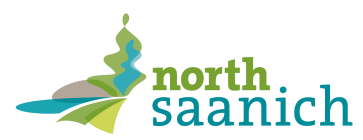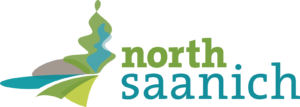Trees
Tree Protection
The North Saanich tree canopy plays an important role in the health and well-being of the North Saanich natural environment and community.
The District has adopted a new Tree Protection Bylaw that came into effect on October 3, 2022. The bylaw has been updated to align with current best practices and conditions, while ensuring it responds to community values. This bylaw aims to find a balanced approach to protect the District’s tree canopy for current and future residents, while providing some flexibility for residents to manage the trees on private property.
Tree Removal
A tree permit is required to remove any trees regulated by the District’s Tree Protection Bylaw.
Regulated trees are defined as:
- A tree with a D.B.H. of 20 cm or greater
- A protected tree that is a:
o A significant tree with a D.B.H. of 60 cm or greater
o Arbutus, Garry Oak, Pacific Dogwood, Pacific or Western Yew, or Shore or Lodge Pole Pine with a D.B.H. of 10 cm or greater
o Tree with a D.B.H. of 10 cm or greater growing in an environmental or steep slope Development Permit Area (DPA) as outlined in the Official Community Plan.
o Nesting tree
o Replacement tree
o District tree of any size (trees on municipal lands)
If approval is granted, property owners may have to pay a permit fee and/or security. Where replacement trees are required as a condition of the tree permit the applicant must provide a financial security.
Process
Once your completed application is submitted anticipate 2-3 weeks for staff review and permit issuance. Do not schedule a contractor before obtaining the permit. Please display the permit in a visible location at least 48 hours prior to commencing work.
| Identify | Apply | Proceed |
| 1. Confirm the tree is on your property | 1. Complete a permit application | 1. Pick up your permit and post it on your property at least 48 hours before cutting |
| 2. Confirm it is a regulated tree | 2. District staff will conduct an inspection | 2. If required, plant replacement tree(s) |
| 3. Contact the District or a tree service if you need help | 3. Pay relevant permit fees and securities to the District | 3. Notify the District after trees are planted to get your deposit back |
Permit Fees
Permit fees will be determined during the review of your application. Depending on whether the application is for residential or development related there may be different fees involved please see the Fees and Charges Bylaw.
Key Documents
- Residential Tree Permit Guide
- Tree Permit Guide for Development Applications
- Tree Permit Application Form
- Owner’s Authorization (to remove shared tree)
- Tree Protection Bylaw No. 1548
- Tree Inspection Request – call 250-655-5454 or planning@northsaanich.ca
- Species list – pg. 31, section D of the Tree Protection Bylaw
Frequently Asked Questions
What do I do if a tree is in imminent danger of falling and injuring person(s) or property and cannot obtain a tree permit prior to cutting the tree?
Section 5 of the Tree Protection Bylaw outlines the process if the tree is cut prior to issuance of a tree permit. Notification to the District and a retroactive application would be required.
What are the new requirements for protected trees?
Property owners must have an acceptable reason for removal of protected trees. Protected trees cannot be removed under the annual allowance.
What is considered a protected tree?
- Significant trees: All trees larger than 60 cm in diameter except cottonwood, red alder and willow
- Trees in sensitive areas: All trees larger than 10 cm in diameter within the steep slope and environmental development permit areas
- Protected species: Tree species greater than 10 cm in diameter, including: Arbutus, Garry oak, Pacific dogwood, Pacific yew, and shore pine
- Replacement trees: Trees planted as a requirement of a tree permit
What are acceptable reasons for removing protected trees?
- when it is required for the construction of a principal building
- when the tree is dead or dying
- when the tree is within two meters of a building foundation
- when it is an invasive species
Removals are also permitted for the following if it not possible to mitigate or avoid the impact, for building structures other than a principal building, trees with high or extreme risk to persons or property, trees causing structure or infrastructure damage, or trees that pose wildfire hazard.
How do I measure diameter at breast height?
To measure diameter at breast height measure 1.4m (4.6 feet) above the highest point of natural grade, then measure the circumference of the trunk and divide by 3.14
How do I measure DBH on a multi-stemmed tree?
For multi-stemmed Trees, the three largest stems shall be measured 1.4m (4.6 feet) above the highest point of natural grade and the DBH of the tree shall equal the cumulative total of the D.B.H. of the three largest stems.
What are the requirements for replacement trees?
Two replacement trees for every tree removed, capped at a maximum of 50 trees per hectare, except four replacement trees for every significant tree removed. Properties undergoing subdivision must plant or retain a minimum of 50 trees per hectare.
What are the permit application fees?
Permit applications (except for dead, dying, or hazardous trees): $150 + $25/tree removed
Permit applications for developments: $250 + $25/tree removed
Am I still allowed to prune and/or top trees without a permit?
Pruning of trees (such as crown lifting or window pruning) is allowed without a permit so long as it is done in accordance with arboricultural best practices. The pruning should not cause damage to the trees.
Topping trees is not an acceptable arboricultural practice and is prohibited in bylaws throughout the region, including in North Saanich’s current Tree Protection Bylaw. A tree that has been topped in the past, can be re-topped with a tree permit if is creating a high or extreme risk.
Does the bylaw apply to pruning hedges?
No, the bylaw does not regulate the pruning of hedges and does not prohibit the re-topping a tree if it forms part of a hedge.
Are replacement trees required to be native species?
Replacement trees planted in development permit areas related to the protection of the natural environment would need to be native species. Other replacement trees provide more flexibility for property owners.
Is there a minimum size for replacement trees?
Yes, the bylaw specifies the size required for replacement trees.
Will this bylaw help the District retain or even increase the tree canopy in the future?
The new draft bylaw would reduce the rate of loss by requiring that trees be retained unless a property meets the tree minimum or there is a valid reason for removal. Replacement requirements to the tree minimum would help replace tree canopy loss.
Trees on District Property
The Infrastructure Services Department is responsible for maintaining trees on public property, including parks and boulevards.
If you have a concern about the condition of trees on public property, including parks and boulevards, please contact Infrastructure Services at 250-656-0781 or admin@northsaanich.ca.
Contact Information
| Trees on Private or District Property |
| Infrastructure Services trees@northsaanich.ca 250-655-5480 |




